Text
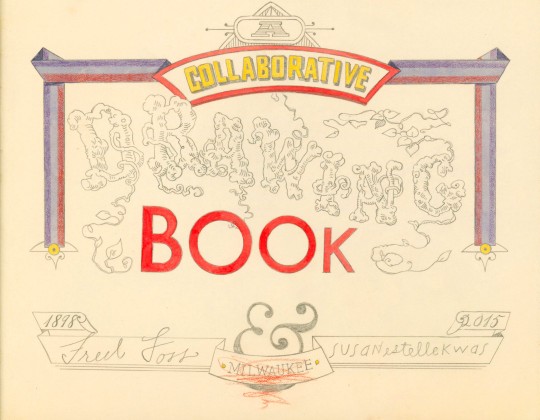


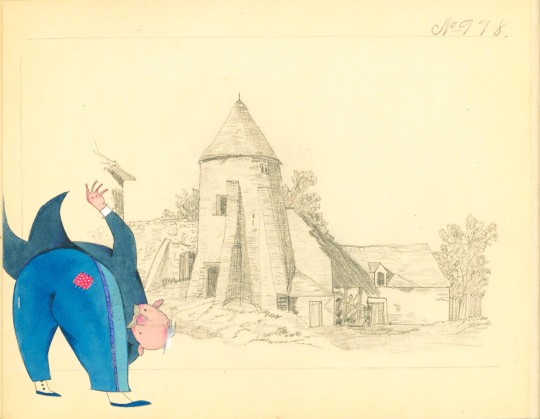
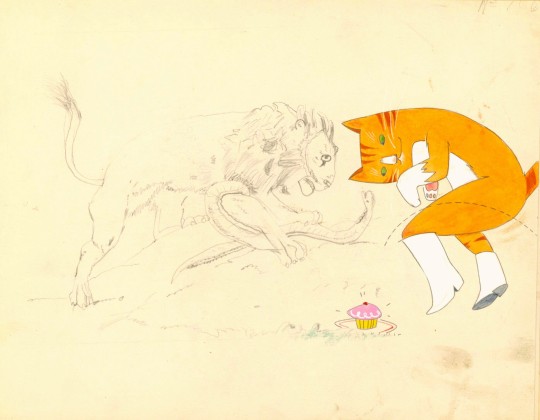




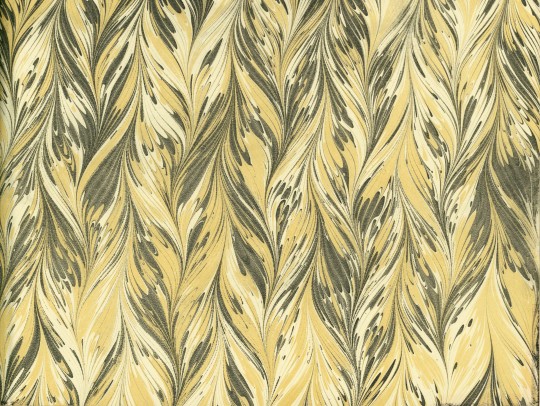
Staff Pick of the Week!
Susan Estelle Kwas is a Milwaukee artist known for her vibrant illustrations and whimsical artist books. Her 2015 publication, A Collaborative Drawing Book is no exception as it invites readers into a visual conversation between Milwaukeean Fred Foss (1898) and Kwas (2015) over one hundred years in the making.
Kwas found Foss’ copy book in an antique shop and was so delighted by his graphite drawings that she decided to pair them with her own. Sometimes tucking characters into Foss’ scenery, other times superimposing them, Kwas’ colored pencil and watercolor contributions are nothing short of charming.
Kwas rebound the book in montage sur onglets form (with pages sewn on stubs to release them from the confines of the gutter) in buffalo leather, preserving the original orientation of each page. The cover decoration was created by blind tooling inset leather strips and is complimented by marbled endpapers.
View other staff picks here.
– Jenna, Special Collections Graduate Intern
30 notes
·
View notes
Text
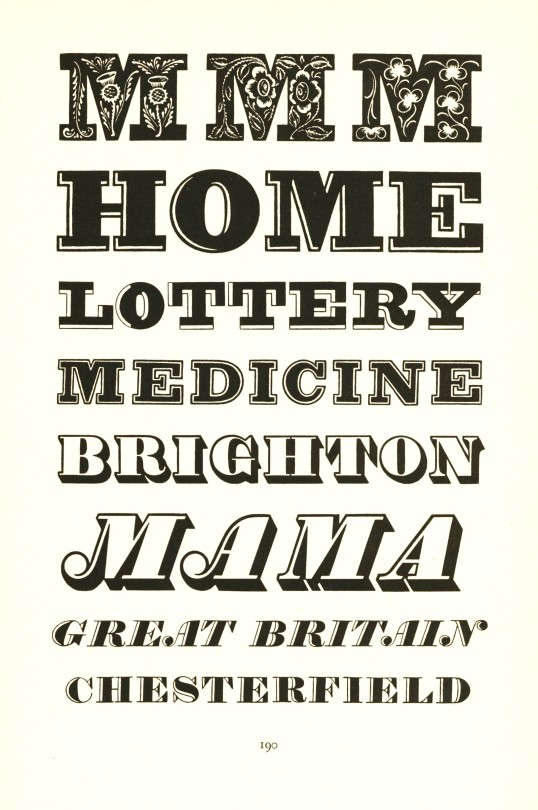



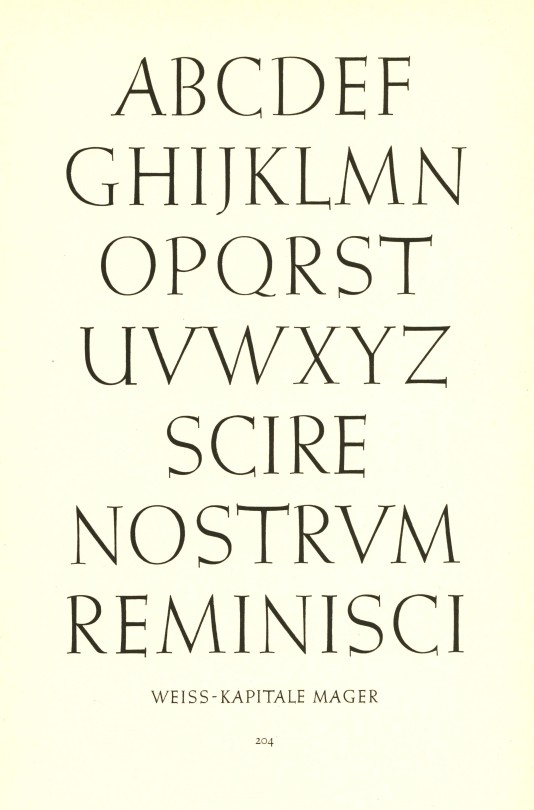
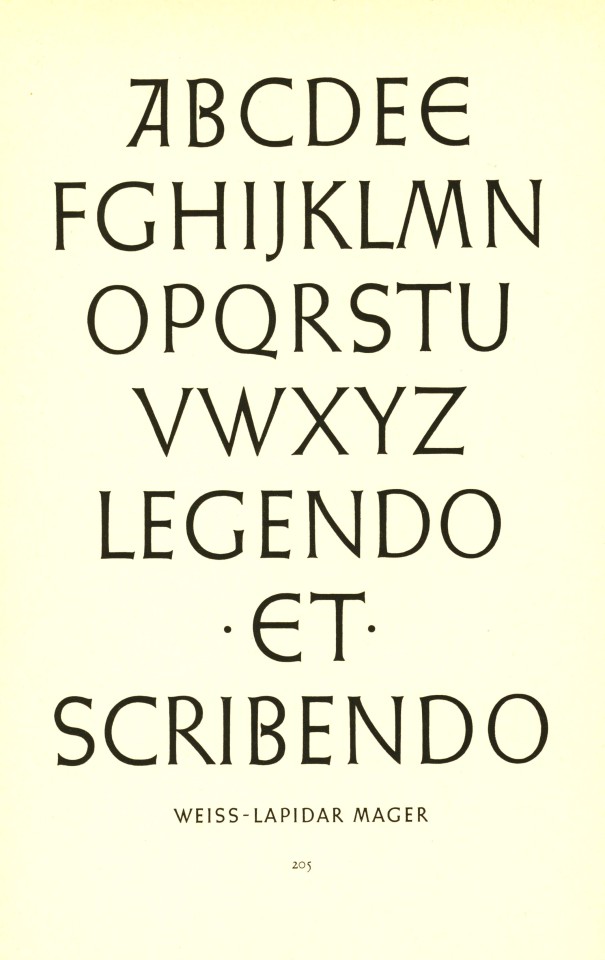
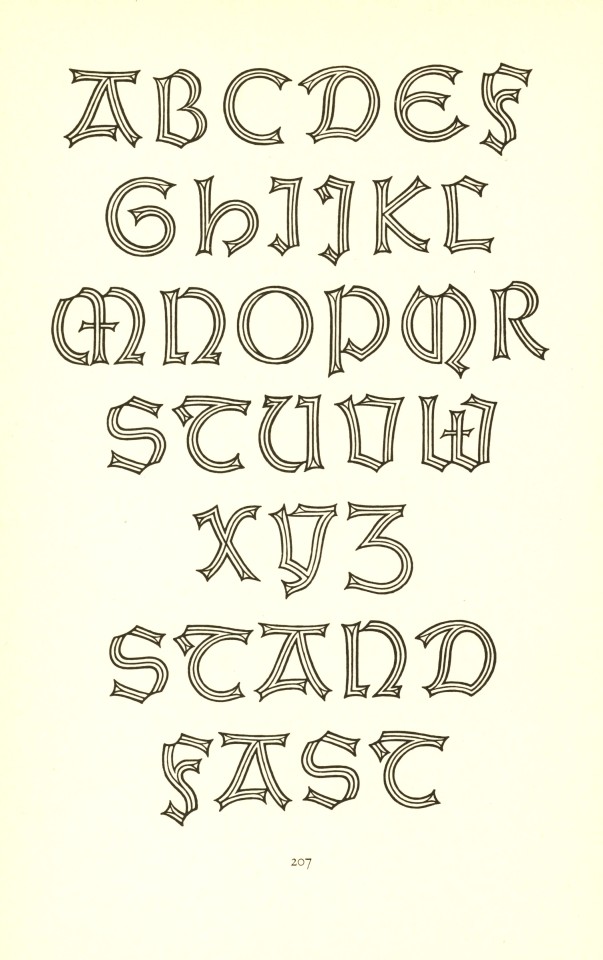


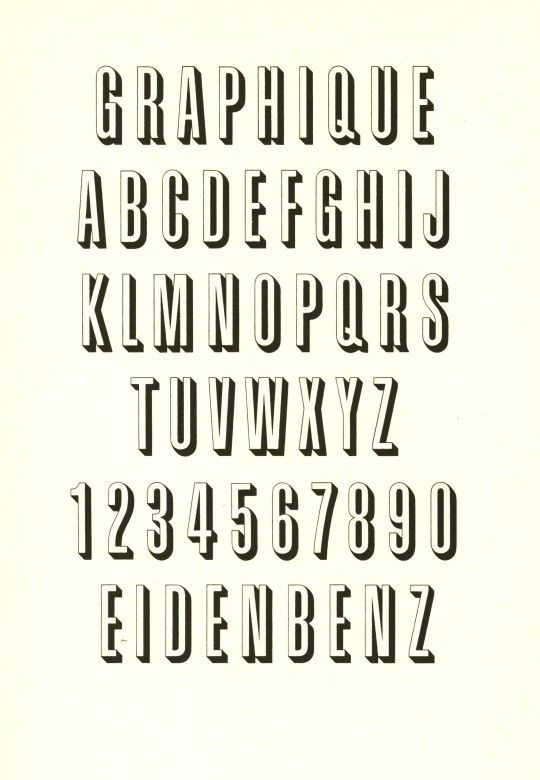
Typography Tuesday
Meisterbuch der Schrift is German-Swiss book and type designer Jan Tschichold's 1952 textbook on historical and contemporary type design published in Ravensburg, Germany by Otto Maier Verlag. From top to bottom:
Type samples from early 19th-century English fashion publications.
Playbill from Stephenson Blake & Co., Sheffield, England.
Futura by German designer Paul Renner, 1927.
Futura Light, also by Renner.
Two sets of capitals by Emil Rudolf Weiss for the Bauer Type Foundry.
A shadowed Weiss Gothic by Emil Rudolf Weiss.
Michelangelo by Hermann Zapf for the Stempel Type Foundry, 1950.
Sistina by Hermann Zapf, also for Stempel, 1951.
Graphique by Hermann Eidenbenz for the Haas Type Foundry, 1945.
Jan Tschichold (1902-1974) was one of the most noted type and book designers of the 20th century. He is remembered most for his two-year stint with Penguin Books (1947-1949), during which he established Penguin’s characteristic design identity, and for his typefaces Transit (1931), Saskia (1931/1932), Zeus (1931) and Sabon (1966/1967).
View more posts with work by Jan Tschichold.
View more Typography Tuesday posts.
38 notes
·
View notes
Text



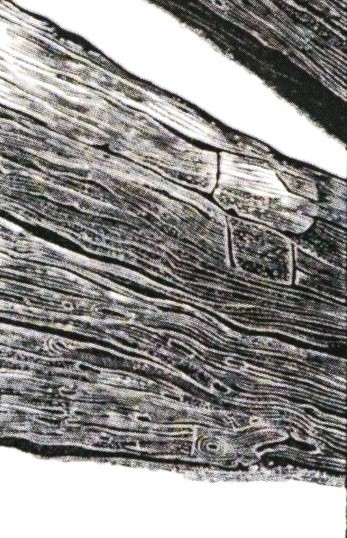



Wood Engraving Wednesday
TONY DREHFAL
Wisconsin wood engraver Tony Drehfal delights in intricate, tightly-focused, textured surfaces as demonstrated in this 17.5 x 12.7 cm (6.9 x 5 in.) print entitled Dovetail, selected by my Wisconsin colleagues Tracy Honn and Jim Moran for inclusion in the Fourth Triennial Exhibition 2020-2022 of the American American wood engravers society, the Wood Engravers’ Network (WEN). This image is from the catalog for that travelling show.
Drehfal learned wood engraving from Ann Arbor wood engraver and WEN founder Jim Horton in 2002, and after a 35-year career as a college photographer, Drehfal retired in 2015 to focus exclusively on wood engraving. He has quickly become a leader in the wood engraving community, and is a member of both WEN and its venerable British counterpart, the Society of Wood Engravers. Of his process, Drehfal writes:
Landscape and the minute details of the natural world serve as the primary inspiration of my wood engravings. Photography, drawing and engraving interweave in my creative process. I take photos often during hikes . . . near my home . . . in northern Wisconsin. Over time, recurring visual themes accumulate; birch trees, decaying stumps, knots and bark textures, and reflections in woodland ephemeral pools. I then draw and expand a theme in my sketchbook, using photos as reference. There is a point when photo references are put away and the process of drawing and wood engraving take on their own natural cadence towards a resulting print.



View other posts with engravings from the WEN Fourth Triennial Exhibition.
View more engravings by members of the Wood Engraver’s Network.
View more posts with wood engravings!
54 notes
·
View notes
Photo




It’s the start of the spring semester.
This cartoon appeared on page 2 of the UWM Post on November 10, 1960.
Take heed, dear students, of the dangers of sleeping in!
We hope all of you have a successful semester.
Be sure to stop in the UWM Archives on the second floor of the Golda Meir Library, we have much to offer. You can also find many interesting items, like full issues of the UWM Post, in our digital collections and not have to leave the comfort of your warm bed.
83 notes
·
View notes
Text


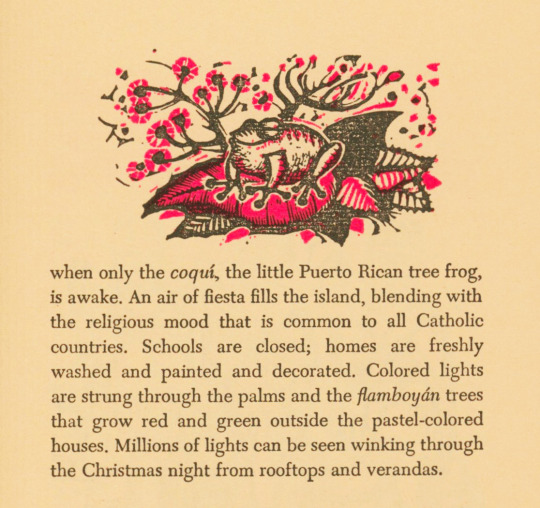
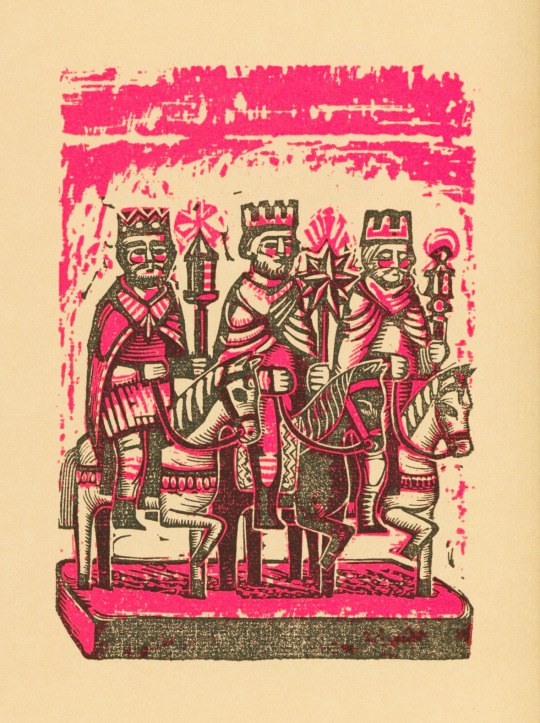


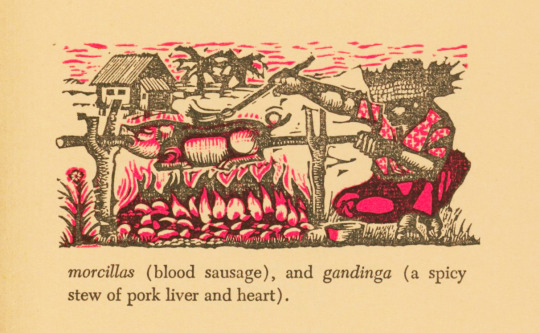



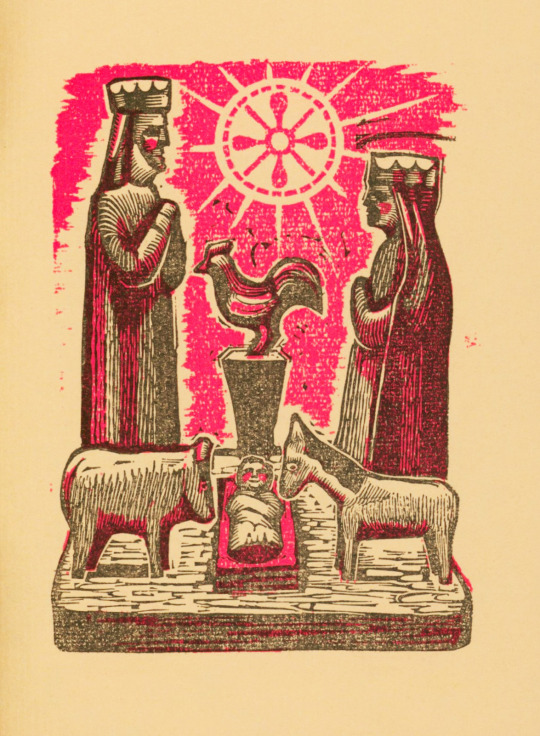
Merry Christmas!
Or as they say in Spanish, Feliz Navidad! Today we celebrate the Christmas holiday with a festive book, Land of Two Christmases, which was published by Oxford University Press in 1965 with 360 copies held for distribution to the Typophiles. The text was written by Harriett Philmus Pitt and discusses the various Christmas traditions celebrated in Puerto Rico, where the books says it is celebrated in both the American and Spanish styles—though I would argue that Puerto Rico has a style all it's own! You can learn all about Christmas and related celebrations in Puerto Rico on the Discover Puerto Rico website.
The illustrations are by Erwin Schachner and were printed using photo-engravings of original linoleum prints. The text was set in Caledonia and letterpress printed on tan laid paper by Marbridge Printing Company, Inc. The book is printed in black and bright pink, making it quite festive though not what most would normally consider to be Christmas colors.
Merry Christmas to all and to all a good night!
View Christmas posts past.
-- Alice, Special Collections Department Manager
54 notes
·
View notes
Text

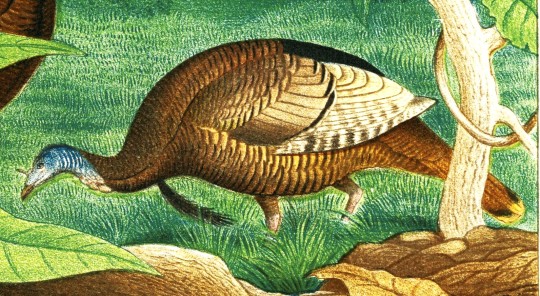
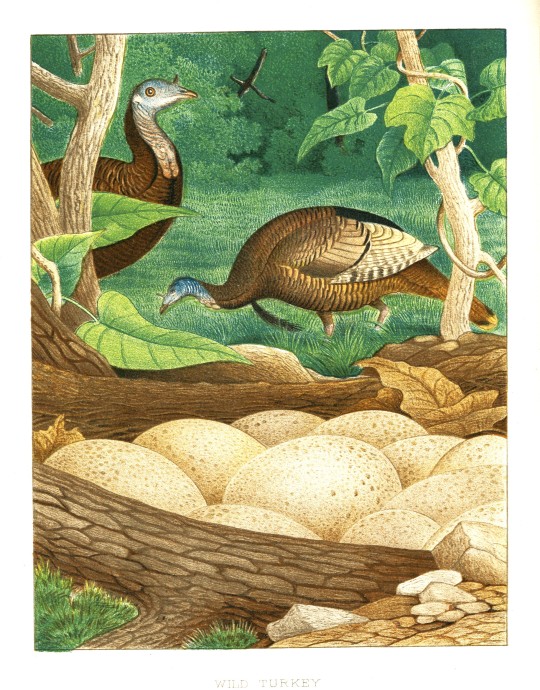
A Thanksgiving Feathursday
These Wild Turkeys (Meleagris gallopavo) and their brood of enormous eggs are from a chromolithograph in Nests and Eggs of Birds of the United States by Thomas G. Gentry and published by J. A. Wagenseller of Philadelphia in 1882, which includes chromolithographs of around 50 paintings of North American birds, eggs, and nests by the American naturalist painter Edwin Sheppard.
Turkey fact: we always thought that the name "Turkey" for both the bird and the country of the same name was just a coincidence. But we learned today that the names are actually related (how did we not know this!). Turns out that indigenous peoples had bred a domesticated form of the Wild Turkey for thousands of years, and the Spanish imported this breed to Eurasia. The breed, or an unrelated species of guinea fowl conflated with the breed, was subsequently introduced to England from the Turkish Middle East, so its name is associated with that connection. Stick that in your oven and roast it!
Happy Thanksgiving, gobble, gobble!

View posts of Thanksgiving Days past.
View more posts from Nests and Eggs.
View more Feathursday posts.
27 notes
·
View notes
Text
Watching the Mississippi River flow through La Crosse, WI.

24 notes
·
View notes
Text
Halloween Spotlight!


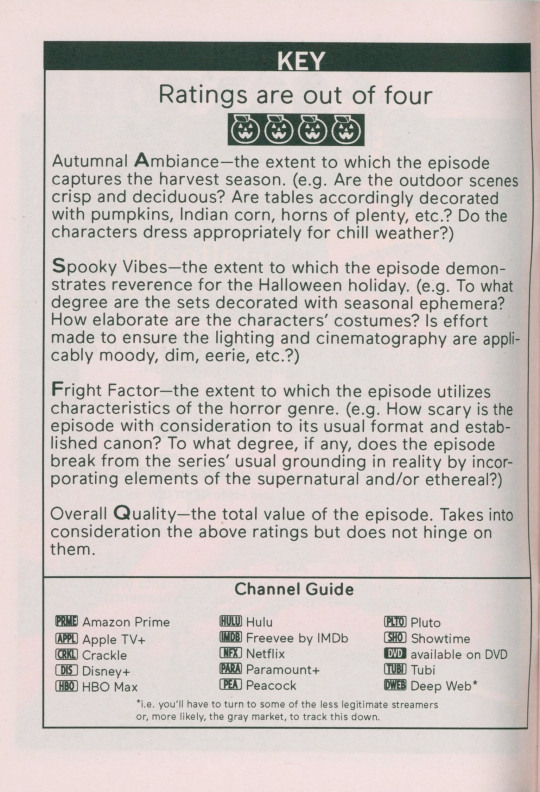

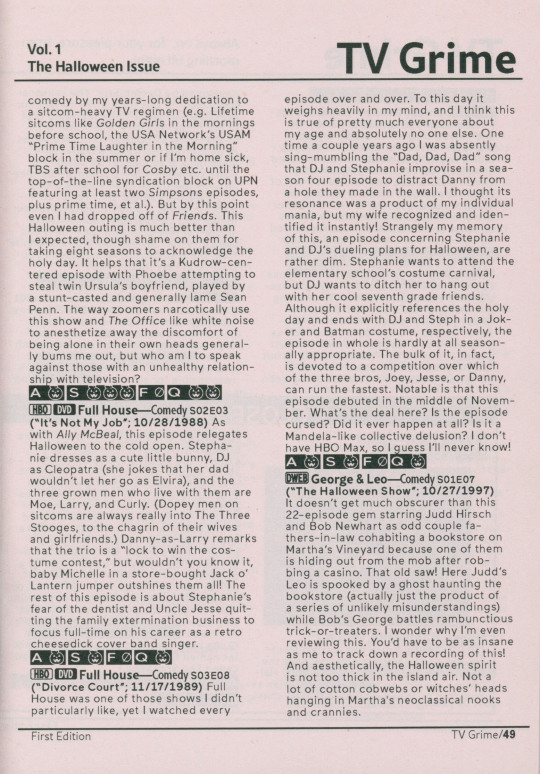

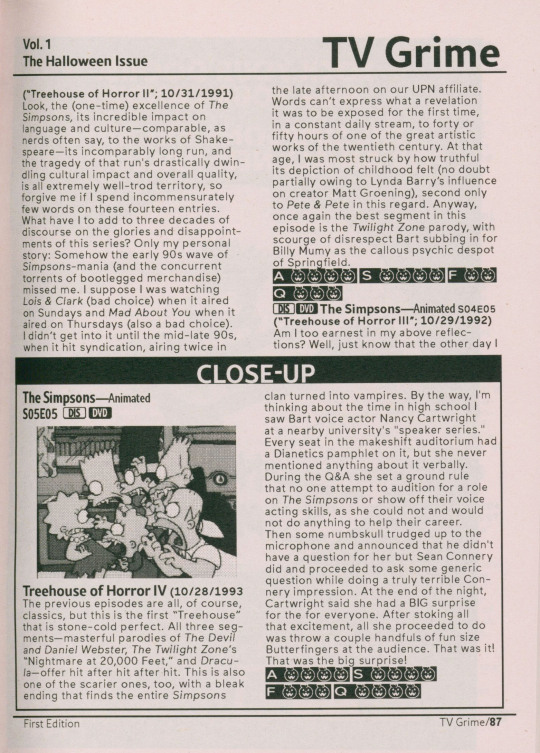
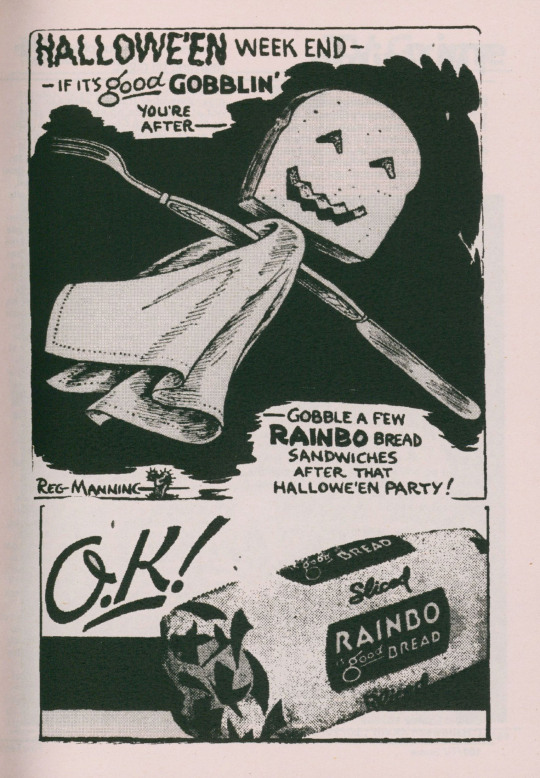
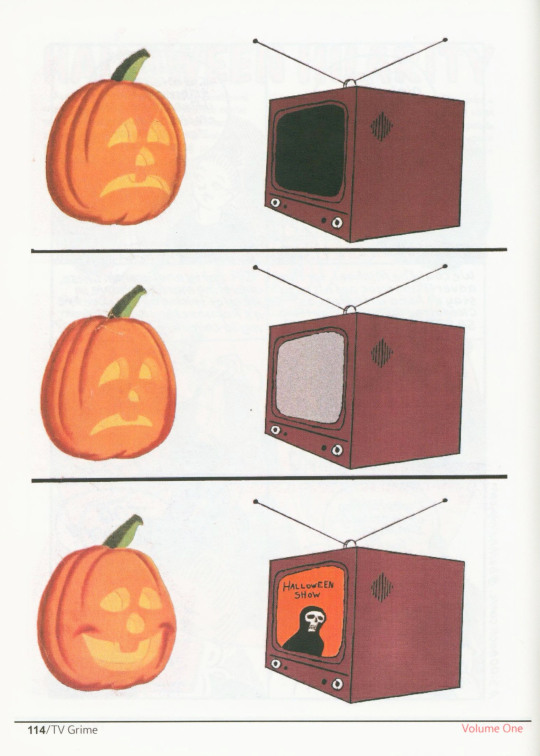
We are getting into the Halloween spirit today with Luke Geddes's TV Guide parody zine TV Grime Vol. 1. Geddes describes TV Grime as “a compendium of deeply personal reflections on every Halloween-themed television episode I’ve ever seen, laid out in a TV Guide-style grid on over 100 newsprint pages.” His reviews are accompanied by a ratings system that judges each episode’s Autumnal Ambiance, Spooky Vibes, Fright Factor, and Overall Quality, along with a detailed channel guide on where to watch.
The issue covers all the big-hitting sitcoms of the 80s, 90s and 00s, including Growing Pains, Fraiser, Martin, Party of Five, Freaks and Geeks, and delightfully has four pages dedicated to The Simpsons' annual Treehouse of Horror episodes. Sprinkled throughout, readers are treated to old network advertisements of their Halloween line-ups.
TV Grime Vol. 1 was printed in Milwaukee, WI October 2022 by Geddes's record label and publishing company Works of Love and is available online here.
– Jenna, Special Collections Graduate Intern
44 notes
·
View notes
Text
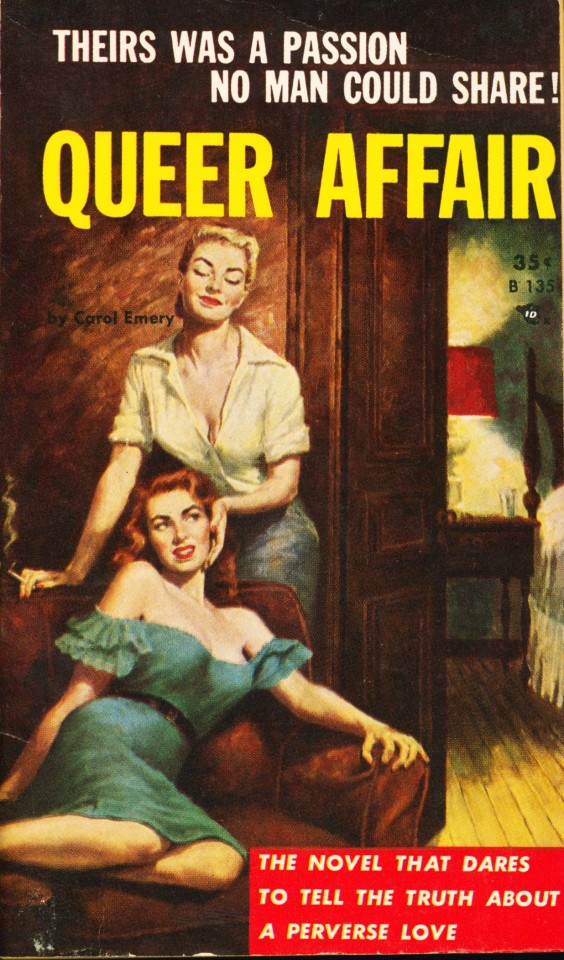



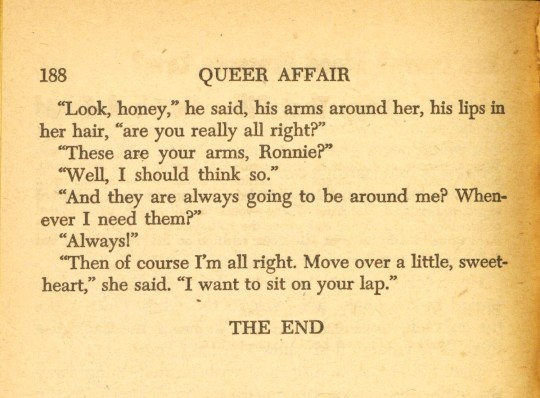
Steamy Saturday
The novel that dares to tell the truth about a perverse love.
Theirs was a love no man could share!
Draga yielded her long-legged girlishness to unnatural embraces. . . . it was an ecstasy such as Draga had never known.
Her lips were tender and clinging as she pressed them to Jo's voluptuous flesh. . . .
She was on the brink of total perversion. . . . Draga's only hope now was -- a man!
Oh, the steaminess of it all!! Carol Emory's pulp novel Queer Affair was published in New York as a Beacon Book, an imprint of Universal Publishing and Distributing Corp., in 1957, and even by today's standards, the sexual frankness of the novel is pretty steamy. Unfortunately, because it's the 1950s, a fully-realized lesbian relationship will not stand. At least one of the partners has to be off her nut (in this case, Jo), while in the end male heroes come to the rescue.
The story centers around up-and-coming dancer Draga Hamilton who is introduced to celebrity sculptor Jo Stanhope by Draga's lawyer Gilbert Young who is desperately in love with Jo. Jo, however, has other ideas, as she seduces the vulnerable Draga and they begin a torrid love affair, which, as already stated, is quite frankly narrated. Draga is head-over-heels, until of course her old flame Ronnie Marsh shows up on the scene and ruins everything for Jo.
In the end, the whole sordid love quadrangle literally devolves into a barely-suppressed S&M encounter. Jo takes her revenge on Draga's infidelity by grabbing a bullwhip that is inexplicably hung on the wall and beats Draga almost senseless with it. The whipping, however, sends both into a building sexual frenzy until both Gilbert and Ronnie come bursting through the door. Ronnie whisks Draga out of harm's way (at least as he perceives it), and Gilbert gives Jo a taste of her own whipping medicine, to which both react with this memorable passage:
Jo Stanhope looked up at him with misted eyes. "Oh, Gilbert -- you've done something for me. You've rescued me. Why, it--it was --" "Never mind," Gilbert said. "And you won't find it so bad being married to me. After all, I'm sort of womanish, you know."
Meanwhile, Draga is recovering in Ronnie's soothing arms, to which she responds, "Move over a little, sweetheart . . . I want to sit in your lap." THE END. Ugh!!
Despite Queer Affair being mentioned in several texts on early lesbian pulp novels, we could find nothing on the author Carol Emory, who we suspect is possibly a man. Nevertheless, the author makes sure early on that the reader knows Emery has done their homework on lesbianism:
Gilbert had warned her that the sculptress was a lesbian, but at the time the fact had seemed to her irrelevant. Love between women was not altogether a new and startling idea to Draga. She had read many books on the subject, including those by Radclyffe Hall and Diana Fredericks.
Appropriately, Barbara Grier, in her iconic The Lesbian in Literature, gives Queer Affair a rating of A for having "a major lesbian component but not sympathetically portrayed." While we may not know who Carol Emory is, we do know that the butch/femme cover art is by Frank Uppwall and was first painted for another pulp novel, Gutter Star by Dorine B. Clark, published in 1954, and then reissued for the cover of Queer Affair three years later.
View more posts on lesbian romance fiction.
View more LGBTQ+ posts.
View other pulp fiction posts.
55 notes
·
View notes
Text
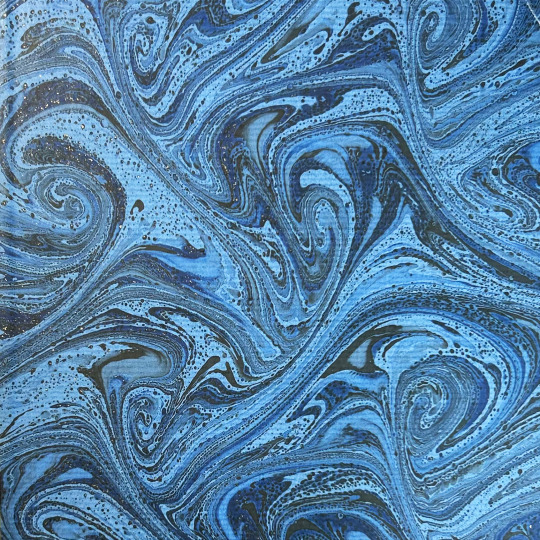

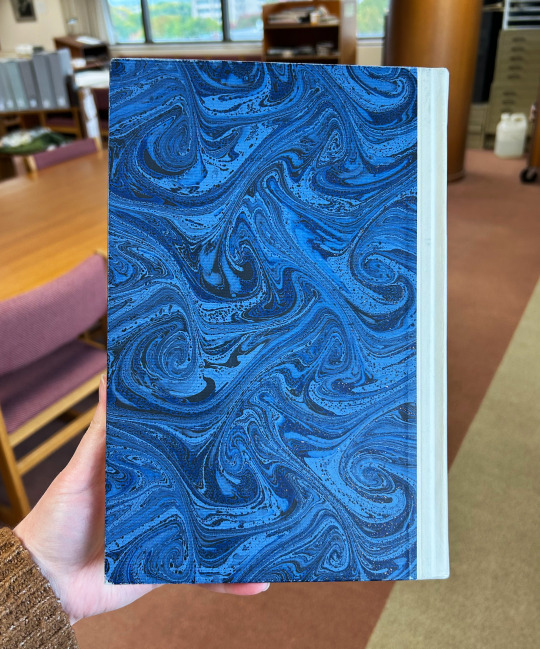

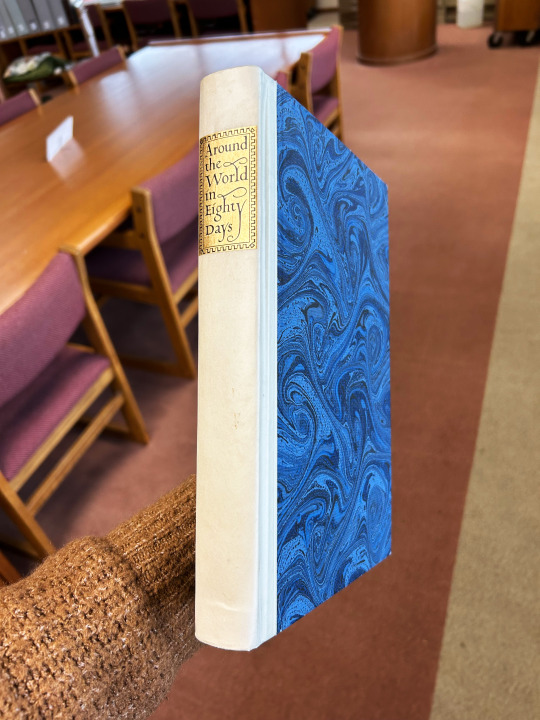

Marbled Monday
This Marbled Monday book is one we posted about recently for the anniversary of the main character setting off on his voyage around the world—Around the World in 80 Days by Jules Verne, as published by the Limited Editions Club in 1962.
While the slipcase it was issued in is covered in plain, navy blue paper, the book itself is covered in "French hand-marbled paper in a deep blue marine pattern" (publication announcement). Marine is not the name of the pattern, just a description of the colors used. This pattern falls under the category of Fantasy patterns and would be created using a stylus to make the organic swirls. There is also a very light speckling of gold in the marbling. The spine is vellum with a gold label printed with the title.
View more Marbled Monday posts.
-- Alice, Special Collections Department Manager
48 notes
·
View notes
Text

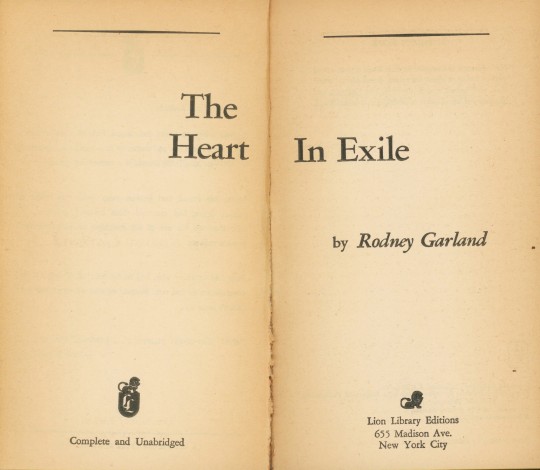

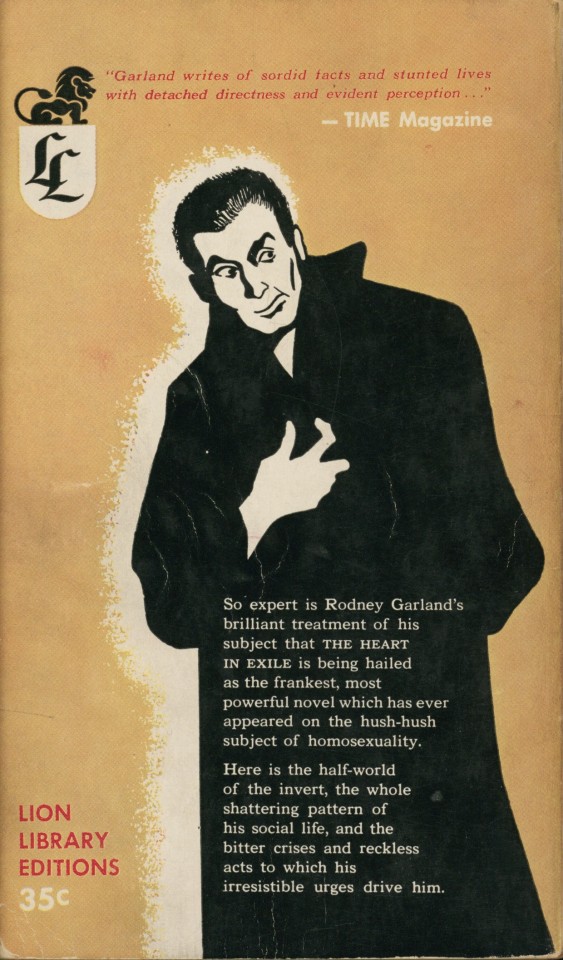
Steamy Saturday
"Creatures of the twilight . . . . driven to prowl their secret, forbidden underground."
"Here is the half-world of the invert . . . the bitter crises and reckless acts to which his irresistible urges drive him."
Julian, his friend, had broken away from this world of searing desire. . . . And then . . . he had committed a monstrous act. Page had to know why. . . . Because he himself, once, had been Julian's lover. . . ."
Oh, the steamy mystery! Dr. Tony Page is a successful psychiatrist, and when his friend Julian Leclerc, a handsome and talented young barrister -- and Tony's former lover -- is found dead, an apparent suicide, something doesn't seem right, and Tony sets out to uncover the truth. His quest takes him from the parties and pubs of the gay underworld of 1950s London to Scotland Yard and the House of Commons as he uses his shrewd and penetrating insight to find who or what was responsible for Julian's death.
Such is the premise of Rodney Garland's The Heart in Exile, a groundbreaking classic of gay fiction and considered the first gay detective story, published in this pulp paperback edition by Lion Library Editions in 1956. The novel, written by Hungarian émigré Adam de Hegedus (1906-1958) using the pen name Rodney Garland, was first published in London by W. H. Allen in 1953. It was a commercial success and was positively reviewed by mainstream publications, and it continues to maintain a significant presence in the queer cultural imagination. The cover art for this first American pulp edition is by noted American artist Arthur Shilstone (1922-2020).
View other gay fiction posts.
View other pulp fiction posts.
93 notes
·
View notes
Text

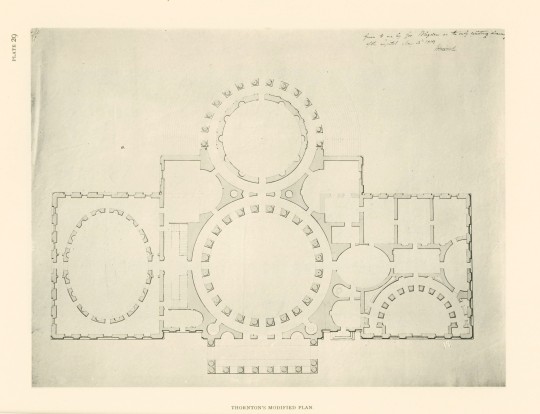
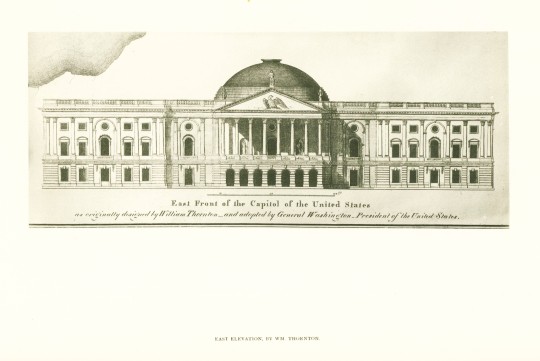
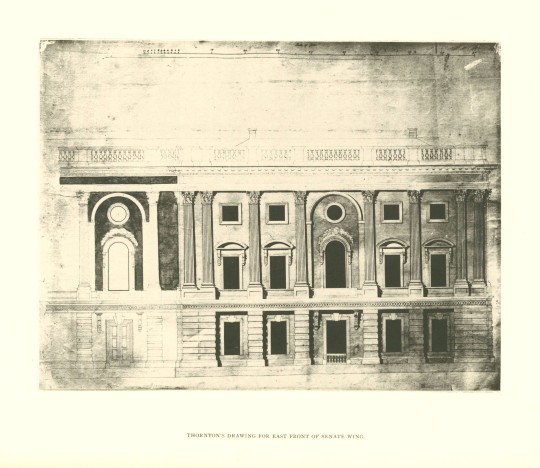


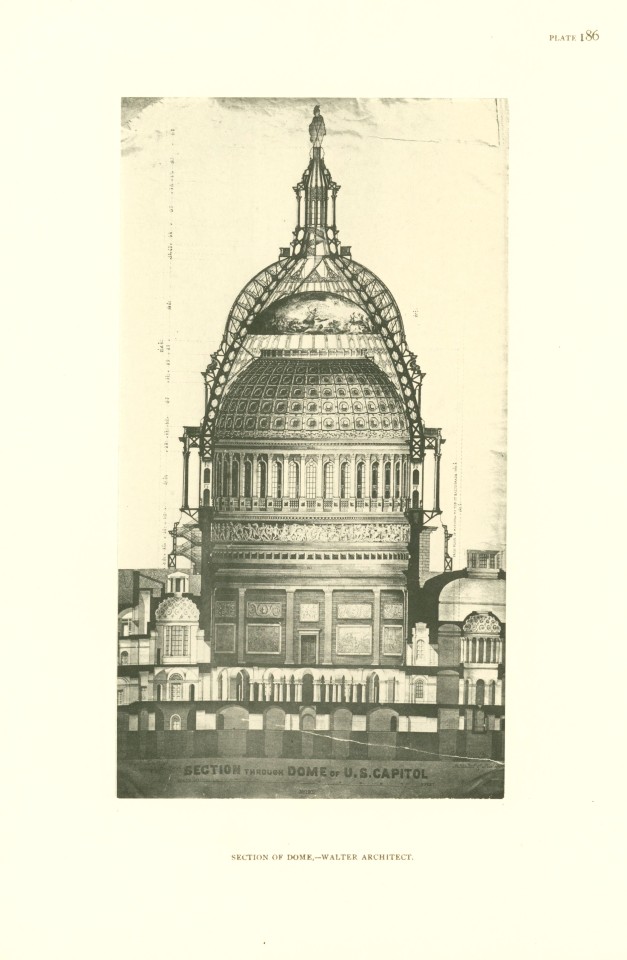

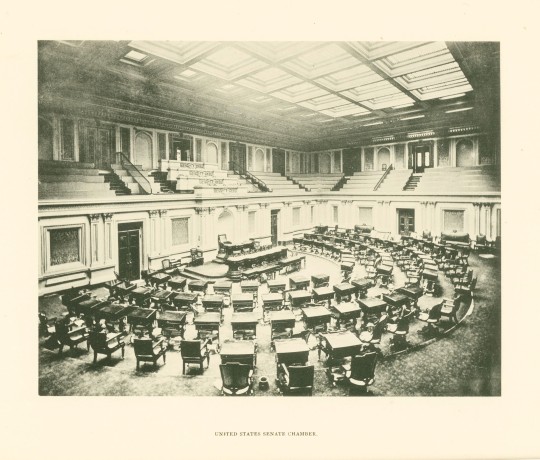
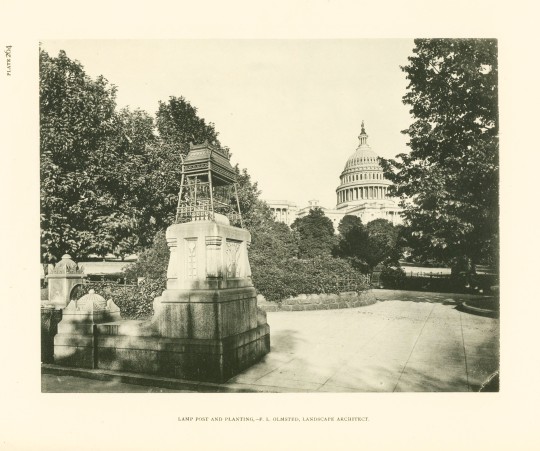
Milestone Monday
On this day, September 18, in 1793, George Washington laid the cornerstone of the United States Capitol Building. He was aided by eight Freemasons dressed in full masonic regalia marking the beginning of a period of construction that lasted seven years and the dawning of the growth of the nation. In 1792, Thomas Jefferson put out a call for architectural design submissions for the Capitol Building and was won over by a late entry from amateur architect William Thornton. Thornton’s design was officially approved in April of 1793, with the caveat that French architect Stephen Hallet would review and modify his plans as needed.
Architect Glenn Brown (1854-1932) explored the history and design of the Capitol Building in his book History of the United States Capitol, published in two volumes by the Government Publishing Office from 1900-1903. For a decade, Brown worked with numerous institutions and organizations to gather plans, illustrations, and the history of the building through architecture and interior design. He highlights that the importance of the building’s merit is not just in its construction and completeness, but its aspirations. Historian Charles Moore, secretary to Michigan Senator James McMillan, writes in the introduction, “[T]he Capitol is not a creation, but a growth, and its highest value lies in the fact that it never was, and it never will be, finished.”
View other Milestone Monday posts.
– Jenna, Special Collections Graduate Intern
22 notes
·
View notes
Text

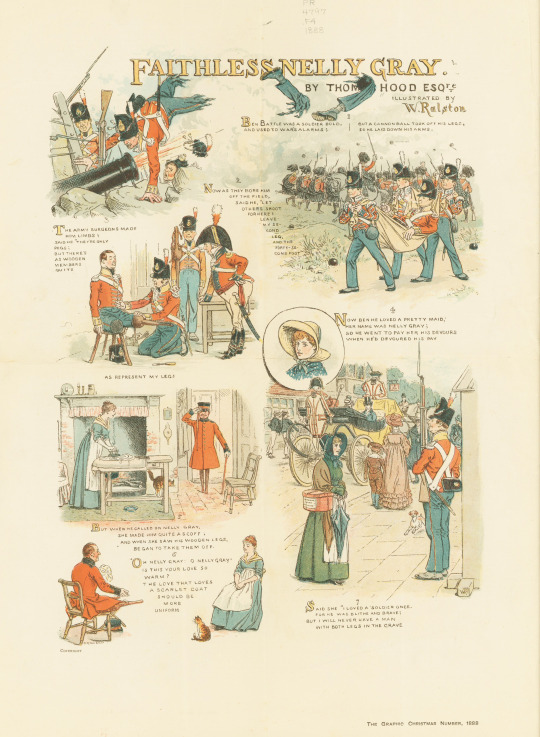




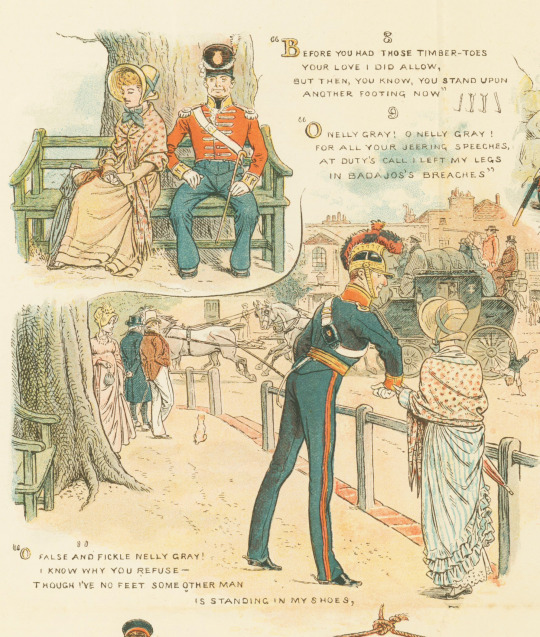

Staff Pick of the Week
I came across this interesting broadside while verifying some catalog records and knew I had to share it! It's a printing of Faithless Nelly Gray, a humorous poem by English editor, publisher, poet, and humorist Thomas Hood (1799-1845). This particular broadside edition of the poem was printed as part of the Christmas 1888 issue of The Graphic, an illustrated weekly newspaper that ran from 1869-1932. The illustration was done by Scottish illustrator William Ralston (1841-1911).
The poem is sometimes subtitled "A Pathetic Ballad," which to me seems pretty appropriate! The poem follows the brave Ben Battle, who loses his legs in the war. When he returns home with peg legs, he goes to visit his sweet Nelly Gray, who says things like "I loved a soldier once, / For he was blithe and brave; / But I will never have a man / With both legs in the grave" and "Before you had those timber-toes / Your love I did allow, / But then, you know, you stand upon / Another footing now." Alas, Nelly has moved on to a new soldier—one who still has legs—and our hero Ben Battle decides to end his own life and then is buried at a crossroads with "a stake in his inside" for some reason... which begs the question, is he a vampire? (We looked it up and know this was a common practice when burying those who took their own lives—but still... vampire?)
View more Staff Picks.
-- Alice, Special Collections Department Manager
20 notes
·
View notes
Text

Mugshot Monday - "Yellow Laurie Gates" coffee mug with Ethiopia Single Origin Light Roast by Peace Coffee
I'm on a boat!
Our family came up to the same cabin near Webb Lake, Wisconsin again this year for some relaxin' and fishin' and eatin' and drinkin'.
The place we rent comes with a pontoon so we go fishing for sun fish and bass. The lake is kind of a smallish so there aren't any whoppers, but the fish are big enough and really fun to catch (and release).
Thought it'd be fun for my 15YO to look like he's hauling in a HUGE fish behind my mugshot! 😂 Love it.


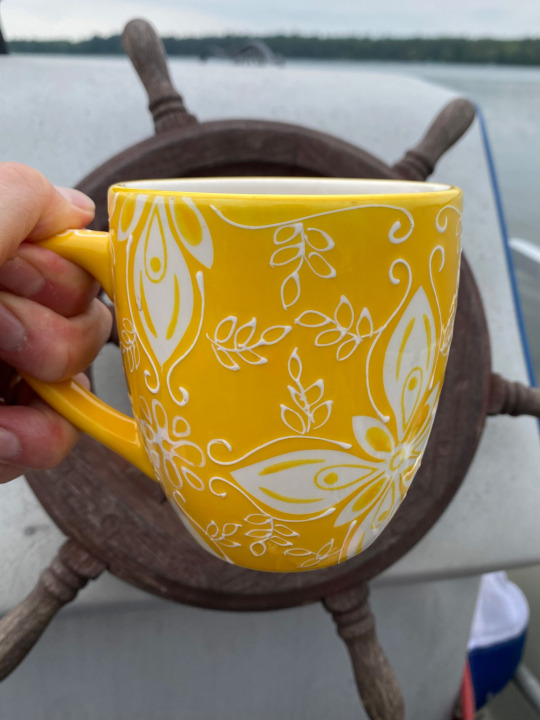
This is my fourth mugshot with one of these simple but lovely Laurie Gates coffee mugs.
There are 5 different mug colors: Orange, Blue, Green, Yellow, and Teal. I guess I've got one left if I want to use the whole set for Mugshot Mondays.
Cheers! Summer's over! 😀 🎣 ☕️
See also my 700+ photos from the Mugshot Monday project here: www.MugshotMonday.com – Every Mug Has A Story
2 notes
·
View notes
Text
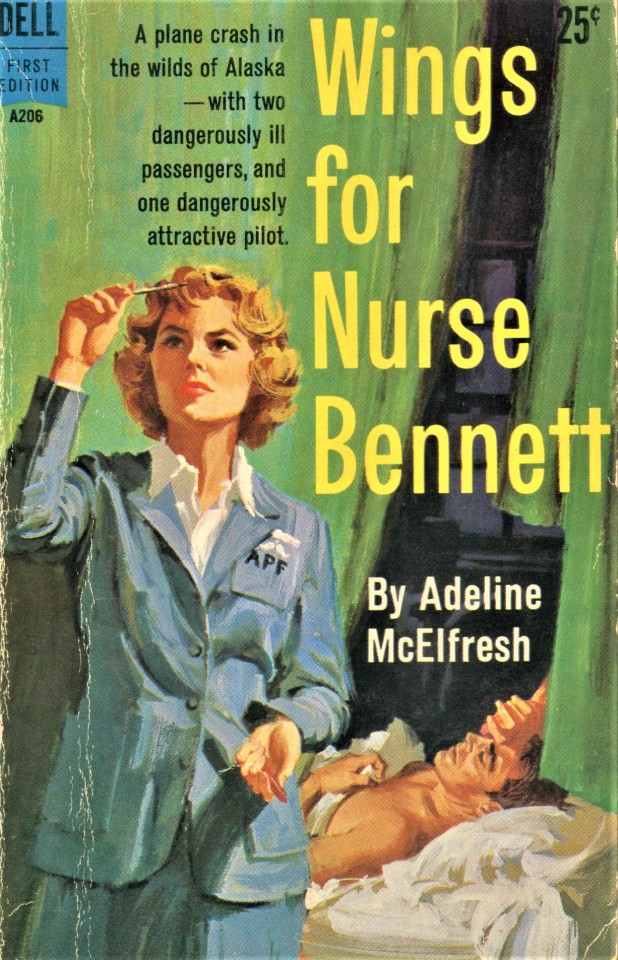

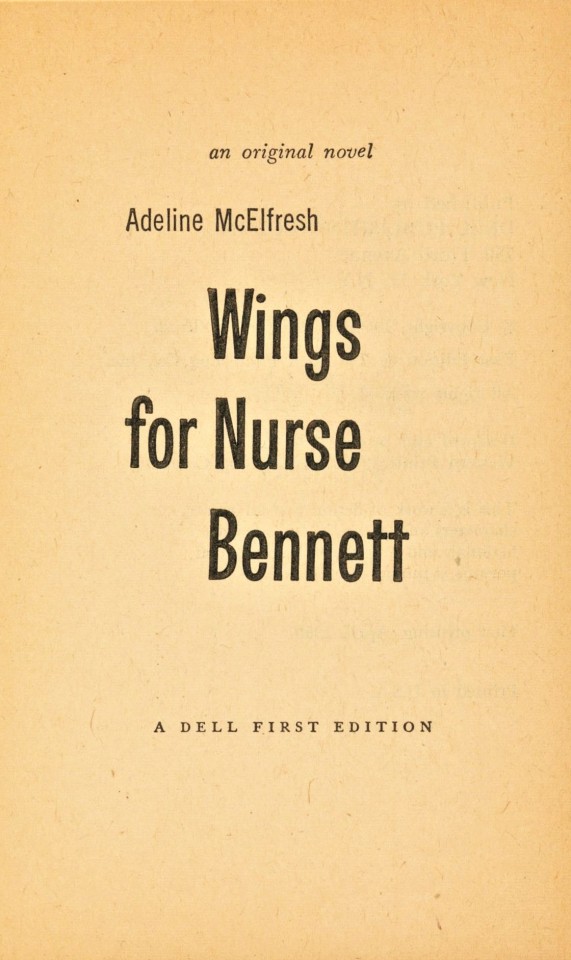

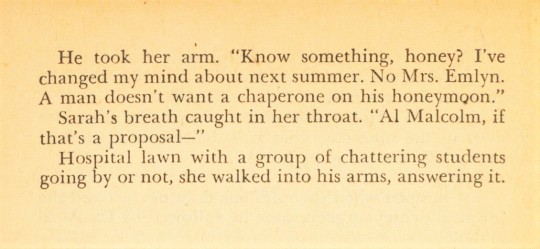
Steamy Saturday
Filling in for her pregnant friend Jenny, nurse Sarah Bennett takes a temporary stint as a flight attendant on a small Alaskan airline and a break from her boorish doctor fiancé, who for reasons even she doesn't understand, she thinks she's in love with. It's only her third day on the job, when -- "Oh, God!" -- the plane is hijacked by thuggish saboteurs and the passengers and crew are left stranded and ailing in the Alaskan wilds "with two dangerously ill passengers and one dangerously attractive pilot" (for a nurse, Sarah is a bit of a nervous Nelly and "Oh, God!" is her response to almost every situation that develops in the narrative). So begins Wings for Nurse Bennett by American romance-fiction writer Adeline McElfresh (1918-2015), published as a pulp paperback in New York by Dell Publishing Co. in 1960.
Despite her neurotic pessimism, Nurse Bennett manages to pull off some heroic medical feats, including delivering a baby (“Oh, God! Was the baby stillborn?" It's not.) and performing an emergency appendectomy ("Not appendicitis! Please, God, don’t let it be appendicitis.”) despite not being a doctor ("“What would they call it, practicing surgery without a license? Or—or criminal negligence?”). As one recent reviewer pleaded, "For crying out loud, someone get this woman a Xanax!"
All the while, she is assisted and swept off her feet by the attentive and "dangerously attractive" co-pilot Al Malcolm. In the end, everyone is saved, and I think we all know who Sarah Bennett ends up with, so much so that we don't mind showing you the last lines, which offers another version of what we in Special Collections call the vampire-like "eating of the nurse" (see the end of our previous post for context).
The cover illustration is by prolific American illustrator Tommy Shoemaker. At very first glance, we all thought that Nurse Bennett was gazing at a miniature model of a jet airplane (the "Wings for Nurse Bennett"?), but then we realized it was just a thermometer with the curve of her hair forming what looked like a cockpit. But then we wondered, why is she holding a hotdog in left hand, or is it a hotdog? You decide:
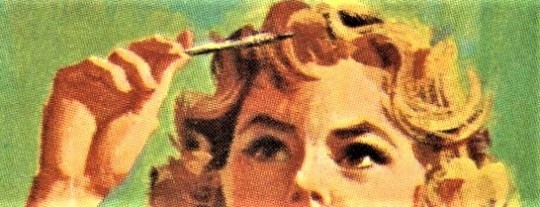

View other nurse romance novels.
View other pulp fiction posts.
38 notes
·
View notes
Text


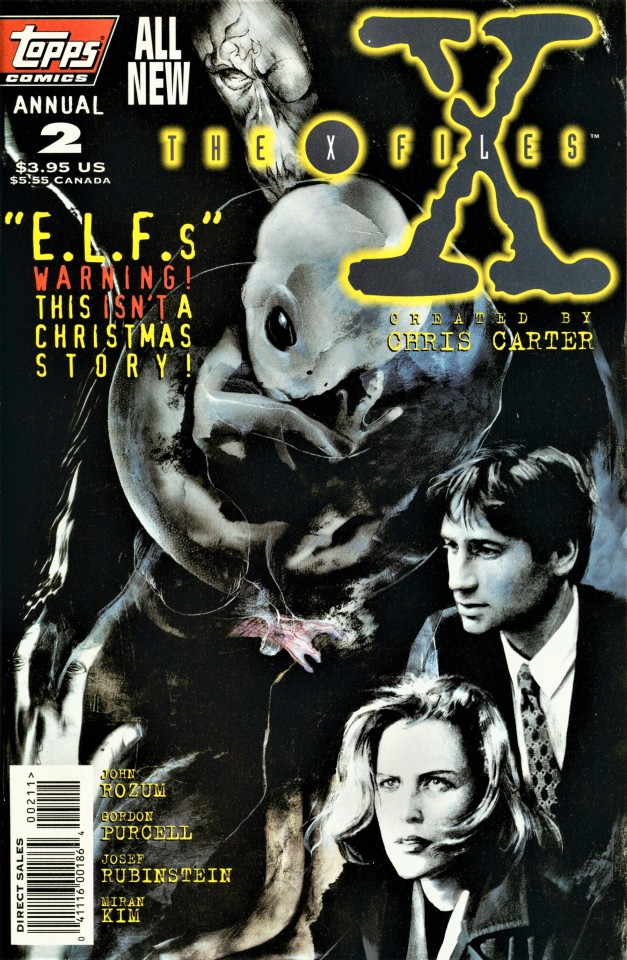






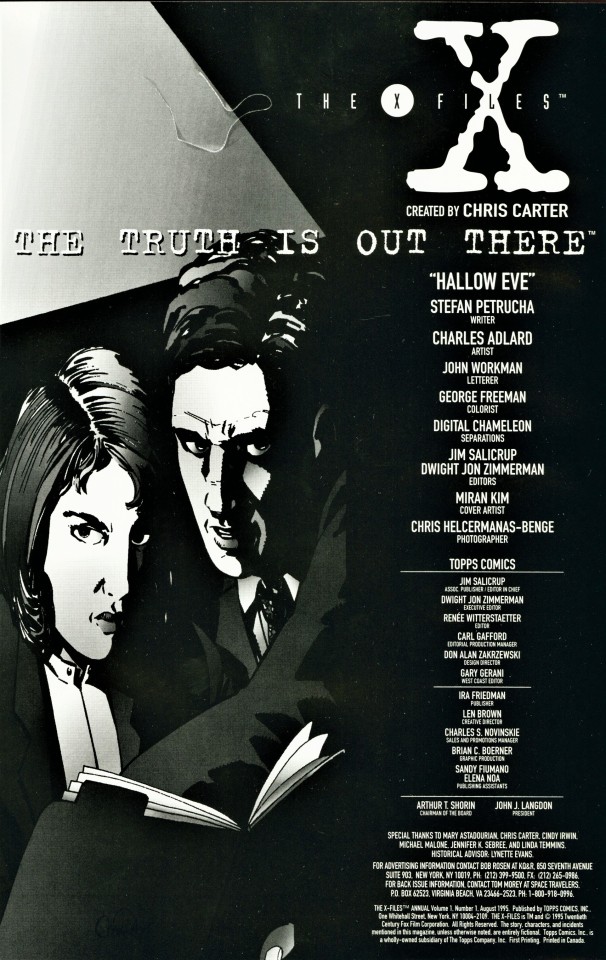
Milestone Monday
On this day, August 7, 1960, American actor David Duchovny was born in New York City. Beloved as FBI agent Fox Mulder on the long running television series The X-Files, Duchovny inspired audiences worldwide to want to believe in the supernatural. With the congressional UFO hearings fresh off the news cycle, if there was ever a moment to lean into Mulder’s ethos, it’s now!
As part of Special Collections' extensive comic collection, we hold several of The X-Files comics (a gift from our friend James Lowder) published by Topps Comics between 1995-98. The comics are a spin-off of the first season of the television series and are packed with all the dramatic pauses, spooky plot twists, and witty banter viewers are accustomed to. Topps intended to adapt every episode, but never made it into season two citing challenges with The X-Files creator Chris Carter who diligently scrutinized rough drafts.
The X-Files comics had a renowned staff of artists including Gordon Purcell (known for his Star Trek work), Charles Adlard, and cover artist Miran Kim. Our issues were written by Stefan Petrucha, John Rozum, and Wisconsinite Kevin J. Anderson. Their artistic interpretations of the series capture the actors’ deadpan humor and Scooby-Dooish stories, staking their claim within the comic world and placing The X-Files within publishing history. There is no shortage of collectibles for The X-Files fandom, but we are happy to share our few contributions with you in celebration of David Duchovny’s birthday.
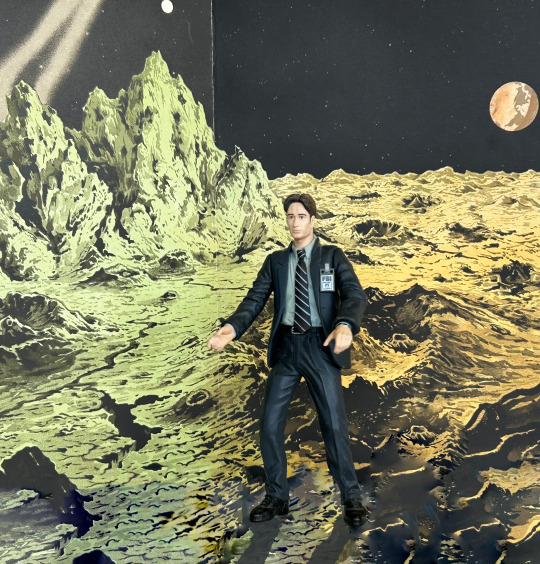
We couldn't resist placing this David Duchovny action figure on the moon. The figure belongs to our department head Max, who keeps it in his office along with other dorky items, and the backdrop is a chromolithographic page spread from our copy of Bilder-Atlas der Sternenwelt, published in Esslingen bei Stuttgart by J. F. Schreiber in 1888.
THE TRUTH IS OUT THERE
View more Milestone Monday posts.
--Jenna, Special Collections Graduate Intern
28 notes
·
View notes
Photo

Architecture and Urban Planning Building (well, construction thereof.)
Designed by architecture firms Holabird & Root and Eppstein & Uhen, the award-winning Architecture and Urban Planning Building was completed in 1993. It covers over 143,000 square feet, making the building one of the largest schools of architecture constructed during the past forty years. Student design studios, classrooms, exhibition areas, computer labs, offices, research centers, a media and photography center, and a lecture hall are all housed in the building.
Construction on the campus in 1992 :: UWM Photo Collection
14 notes
·
View notes